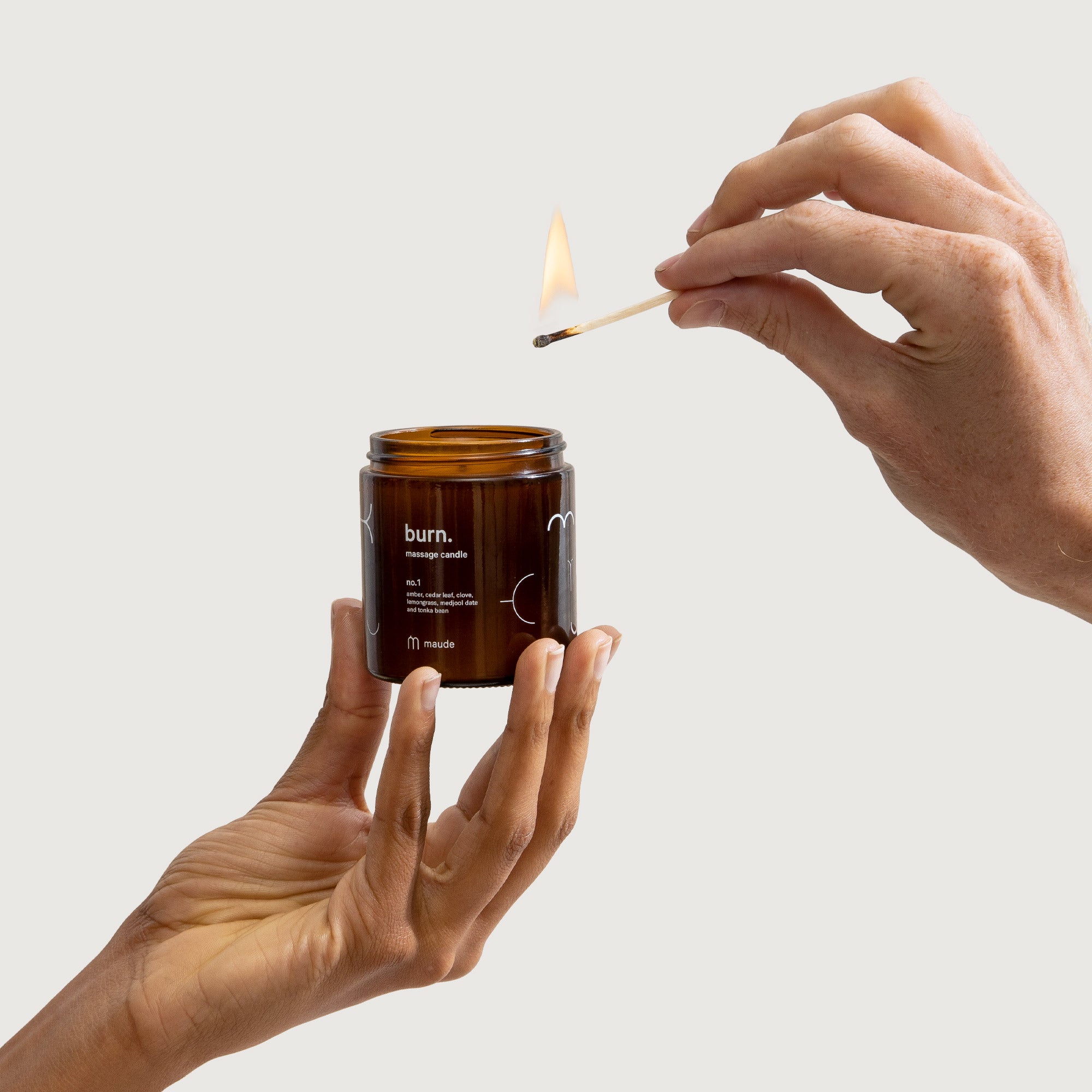A Beginner’s Guide To Orgasmic Meditation.

Mindfulness, two ways.
When it comes to the pursuit of wellness, human creativity knows no bounds. Famously, we’ll try anything: jabbing ourselves with needles, embarking on doctor-administered ketamine journeys, shoving polished jade eggs into our vaginas. We’ll go on retreats, drink vinegar, and tuck ourselves, naked, into chambers meant to simulate Arctic adjacent temperatures. So when it comes to our sexual well-being, few practices feel more de rigeur than orgasmic meditation. And for the uninitiated, it’s exactly as it sounds.
What is orgasmic meditation?
Mindfulness, at its core, is a simple concept: It’s the quality or state of awareness. Of paying attention to one’s body, one’s brain, one’s breath. In traditional meditation practice, you’re often instructed to allow your thoughts to wander; to be mindful of where they land. You’re turning your attention inward and embracing the present moment. So orgasmic meditation (or OM as many folks call it) is about using sensuality as a way of combining intimacy, eroticism, and mindfulness.
How does it work?
Unlike more traditional meditation practices, OM generally requires two players: The meditator, and the stimulator. In typical formats, the meditator must have female genitalia and is required to sit still, eyes closed, while the second party strokes the clitoris for 15 minutes. It’s not about general stimulation, though. The stroking comes with a specific set of commandments: It should focus on the upper-left quadrant of the clitoris, and it should move in an up-and-down motion (the gesture is pointedly gentle—you’re meant to apply no more pressure than you would to an eyelid). Generally, the stimulator is wearing latex gloves treated with lubricant.
Strangely enough—despite its nomenclature—the goal of OM is not to achieve orgasm. Instead, it’s about connecting with your body and giving in to the sensations that arrive during stimulation. It’s about feeling pleasure in the present moment, rather than experiencing heightened sensuality as “foreplay” to something else (orgasm).
How did the practice come about?
The finer points of OM as we know it today have relatively controversial origins: The prescriptive manual for the practice was devised in 2004 by a company called OneTaste, the world’s first self-described orgasmic meditation company. The organization rocketed to relative fame after the NYTimes published a glowing profile and instantly, the obvious roster of celebs (think: Kim Kardashian, Gwenyth Paltrow) expressed instantaneous support. That said, the experience was hardly democratic. With sessions clocking in at around $200 (for 15 minutes of stimulation, might we add), most folks couldn’t afford to incorporate the practice into a routine—which was likely for the best, as the business shut down following an FBI investigation in 2009. That said, many sex therapists, mindfulness experts, and even scientists still speak about the benefits of OM (even without corporate backing).
What are the benefits?
Beyond the obvious positive goals—feeling more present and more divinely connected to your own body—studies have shown that orgasmic meditation can do excellent things for your brain waves. Specifically, OM is proven to stimulate the frontal lobes of the brain devoted to both focus and a sense of release (the cortex most often tied to a “flow state”). Additionally, researchers have noted OM-related activity in the parietal lobe—the brain area associated with the spatial representation of the self (think: feelings of oneness or connectedness), as well as parts of the temporal lobe, which caters to the emotional centers of the limbic system (often, this feels like an onrush of positivity).
As a result, OM is said to help with stress and anxiety, or body image issues—and for folks who use a partner as a stimulator, the practice is also frequently cited as a way to increase a sense of openness, communication, or even closeness within a couple.





